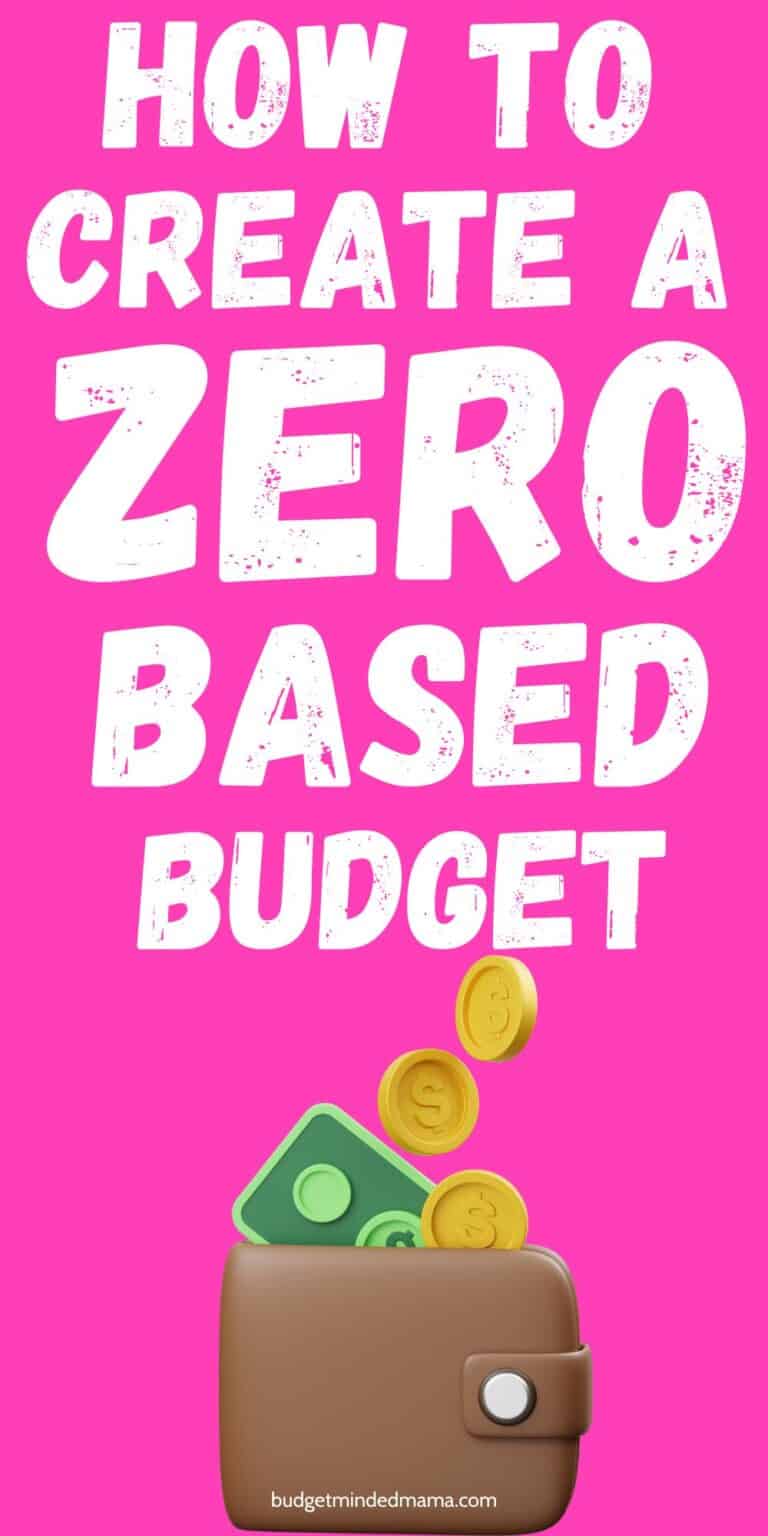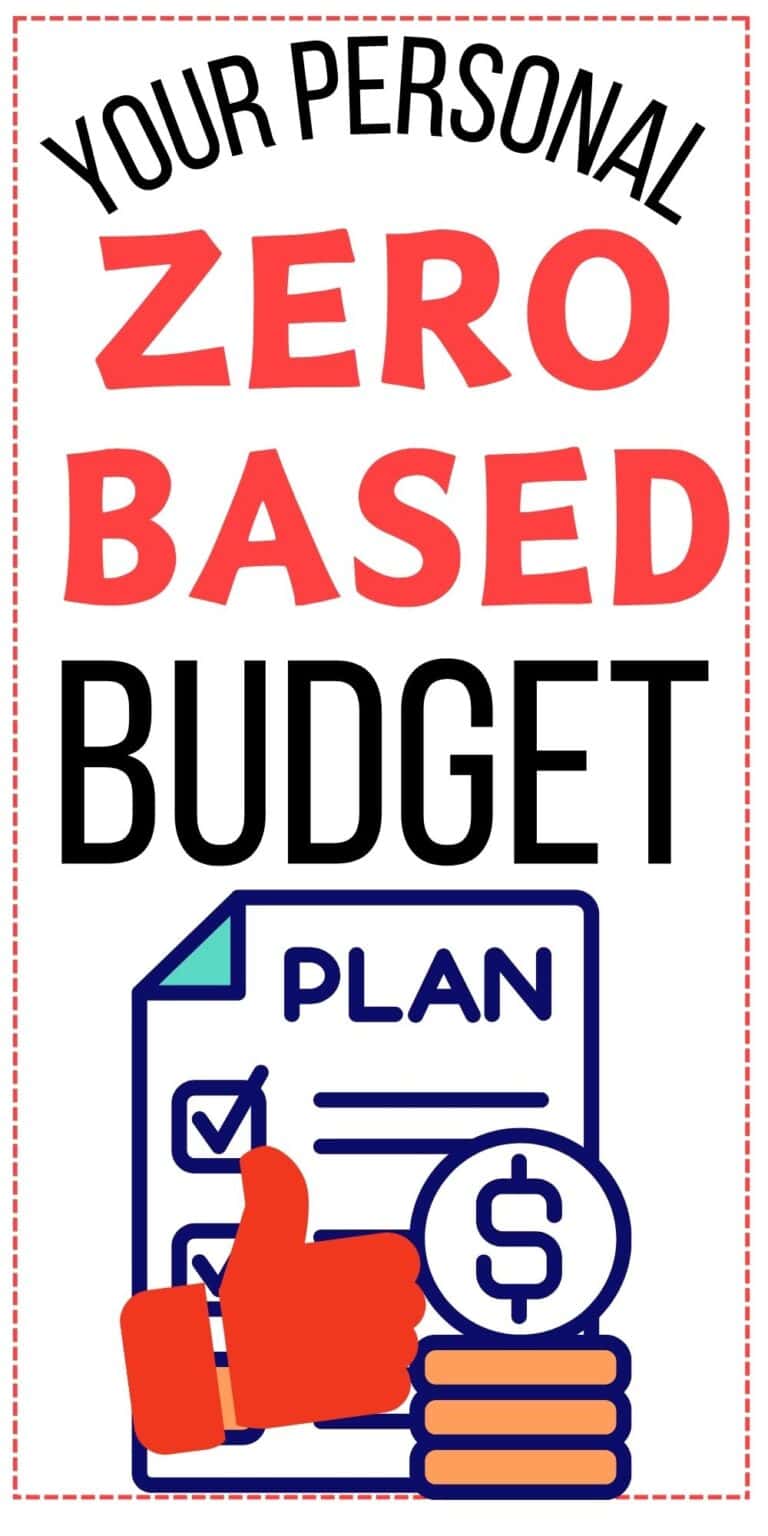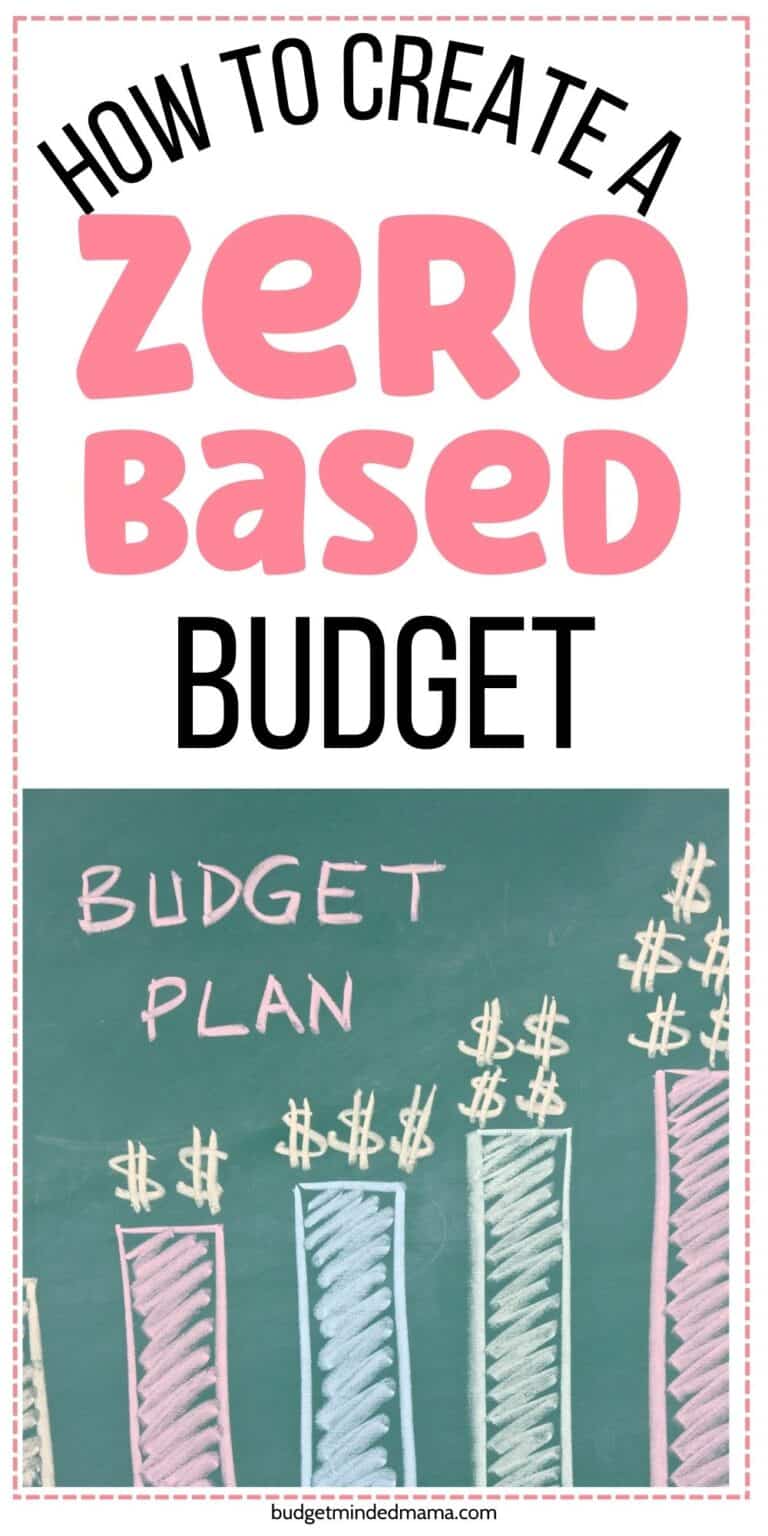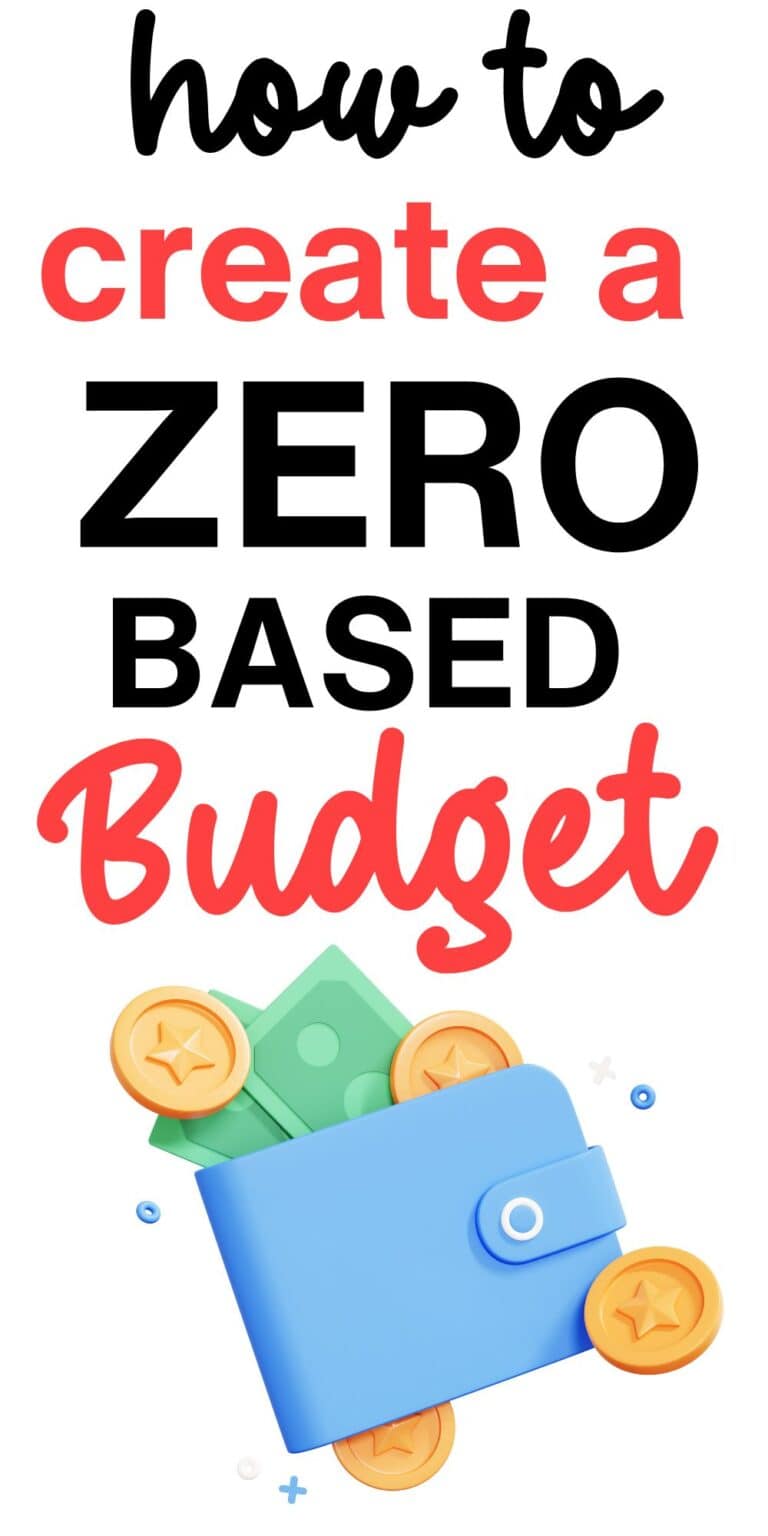Ready to take control of your finances once and for all?

If you’re a budget beginner or just tired of feeling like money slips through your fingers, a zero-based budget might be exactly what you need.
Think of it like the viral no spending challenge but with a lot more structure and a lot less stress.
If you’re wrangling a family budget or just looking to make your dollars stretch further, this simple method can help you make every penny work for you.
It’s all about giving every dollar a job, so there’s no room for waste.
This isn’t about cutting out every little fun thing—it’s about prioritizing what matters most to you and making sure your money goes where it counts.
So let’s walk through how to set up a zero-based budget that works for your life without the headaches!
How to Create a Budget for Beginners

Creating a budget when you’re a beginner can feel like a big, scary task, especially if you’re new to it.
But trust me, it doesn’t have to be overwhelming.
Once you get the hang of it, budgeting becomes a powerful tool that gives you control over your money, instead of your money controlling you.
The best part? It’s all about finding a method that works for you.
There’s no one-size-fits-all, so take a deep breath and know you’ve got this.
Track Your Income and Expenses
Before you can make your zero-based budget, you need to get a clear picture of your money flow.
Start by tracking what’s coming in (that paycheck, side gigs, anything else) and what’s going out (rent, groceries, subscriptions you forgot you signed up for).
It might seem tedious, but once you’ve got the full picture, you’ll be able to spot any sneaky spending habits and take control of where your money goes.
Categorize Your Spending
Next, break things down into categories: essentials (like rent and bills), non-essentials (like dining out or that streaming service you use once a month), and savings.
By seeing where your money is going, it’ll be way easier to figure out where you can cut back or shift things around.
It’s not about saying “no” to everything you enjoy, it’s just about being intentional with how and where you spend.
Here’s an example of some categories:
- Housing (rent/mortgage, utilities)
- Transportation (gas, car payment, public transit)
- Food (groceries, dining out, coffee)Insurance (health, car, home)
- Savings (emergency fund, retirement)
- Entertainment (movies, subscriptions, outings)
- Debt Payments (credit cards, loans)
- Personal (clothing, beauty, hygiene)
- Childcare (school fees, activities)
- Miscellaneous (gifts, donations, unexpected costs)
Don’t Stress If You Slip Up
Life happens. Sometimes you’ll accidentally overspend, forget to track a purchase, or feel the urge to splurge.
Don’t beat yourself up about it!
Budgets are flexible, and the key is getting back on track without guilt.
Every small step you take to stick to your budget counts, and a little slip-up doesn’t mean you’ve failed.
It’s all part of the journey, and tomorrow’s another chance to do better.
How to Create a Weekly Budget

Creating a weekly zero-based budget is like giving yourself a weekly money check-up.
It’s an easy way to stay on top of your finances, without waiting until the end of the month to see where your money went.
By breaking things down into manageable chunks, you’ll be able to make adjustments in real-time and avoid any surprises.
It’s all about making sure you’re living within your means, week by week, and feeling confident about where your money’s going.
Figure Out Your Weekly Income
First things first, figure out how much you’re working with each week.
This includes your regular paycheck, any side hustle income, and anything else that’s coming in.
Once you know what your weekly income is, you can start assigning your dollars to different categories without stressing about running out of funds halfway through the week.
Break Down Weekly Spending Categories
Now it’s time to break things down into categories.
Think about what you absolutely need to spend on every week—groceries, gas, utilities, any bills that are due.
Don’t forget to include things like entertainment or your morning coffee run!
The goal is to categorize everything you spend so you can get a clear picture of where your money is going each week.
Here are some weekly spending categories you might have in your zero-based budget:
- Groceries (weekly food shop, snacks)
- Gas (car fuel or public transit pass)
- Dining Out (takeout, coffee runs)
- Entertainment (movie tickets, streaming services)
- Household Supplies (cleaning products, toiletries)
- Miscellaneous (unexpected purchases, impulse buys)
Set a Limit for Each Category
Once you’ve got your categories, set a reasonable limit for each one.
Be realistic about what you can afford.
If you’re new to budgeting, it’s okay if your limits aren’t perfect at first.
It’s more important that they’re manageable and you’re not stretching yourself too thin.
This gives you a framework to stay within, so you can be conscious of where your dollars are headed.
Review Your Budget at the End of the Week
At the end of the week, take a quick look back at how you did.
Did you stick to your limits? Was there an area where you overspent or saved more than expected?
This isn’t about beating yourself up; it’s about learning what worked, what didn’t, and how you can tweak things for next week.
The more you review, the easier it becomes to get into a rhythm that works for you and your budget!
How to Create a Monthly Budget

Creating a monthly zero-based budget is like setting the foundation for a stress-free financial life.
It gives you a clear picture of your finances, so you can make smarter decisions and feel more in control of your money.
By planning ahead, you can avoid surprises and still have room for the things that matter most to you.
Let’s take a look at how to break it down so it works for you, month after month:
Write Down Your Monthly Income
Start by writing down how much money is coming in every month.
This includes your regular salary, side income, and anything else you can count on.
Knowing exactly what your monthly income is will give you a solid base to work from, helping you allocate your funds without overextending yourself.
Figure Out Your Fixed Expenses
Next, list all of your fixed expenses.
These are the bills that don’t change from month to month, like rent, utilities, and subscriptions.
Knowing these fixed costs will give you a clear idea of how much of your income is already accounted for, and what’s left to work with.
Look at Your Variable Expenses
After that, take a look at your variable expenses—the ones that can fluctuate, like groceries, gas, or dining out.
These are where you have more flexibility to make adjustments throughout the month, for example:
- Groceries (food, snacks, drinks)
- Gas (fuel for car or transportation costs)
- Entertainment (movies, events, streaming subscriptions)
- Dining Out (restaurants, coffee shops, takeout)
- Health & Fitness (gym memberships, fitness classes)
- Shopping (clothes, electronics, non-essential purchases)
- Travel (weekend trips, spontaneous getaways)
- Personal Care (haircuts, skincare, spa treatments)
By tracking these expenses, you can easily spot areas where you might want to cut back or allocate more funds if needed.
Track Everything Throughout the Month
Tracking your expenses throughout the month is key to sticking to your budget.
Keep an eye on your spending, even if it’s just a quick check once a week.
This will help you stay on track and avoid those sneaky little purchases that can add up fast.
Trust me, it makes all the difference to check in regularly.
Review Everything at the End of the Month
At the end of the month, it’s time to review your zero-based budget.
Take a moment to see how close you came to sticking to your limits and what areas you might need to adjust next time.
This isn’t about perfection—it’s about learning, adjusting, and making small improvements.
Each month is a chance to get better at managing your money!
How to Create a Zero-Based Budget in Excel or Google Sheets

Now that you’ve got a good understanding of what a zero-based budget is and how it works, it’s time to get organized with a little help from Excel or Google Sheets.
This budgeting hack will make your life so much easier by keeping everything in one neat and tidy place.
No more scribbling on scraps of paper or losing track of expenses—you can have your entire budget right at your fingertips!
Open a New Sheet in Excel
First, open up Excel and create a new sheet. You’re going to want to make a few key columns: Category, Budgeted Amount, Actual Amount, and Difference.
List Your Categories
In the Category column, list out all of your budget categories—like rent, groceries, utilities, savings, and fun stuff like dining out.
Fill in Your Budgeted Amounts
Then, fill in your Budgeted Amounts for each category based on your income and financial goals.
Track Your Actual Amounts
As you go through the month, input your Actual Amounts in the next column. This is where the magic happens. At the end of each week (or whenever you need to), you can easily compare how much you’ve spent versus how much you planned to spend.
Check the Difference
The Difference column will help you spot where you’re on track and where you might need to adjust.
Customize and Visualize Your Progress
It’s seriously that simple! With Excel, you can even color-code or add in formulas to help you visualize your progress better.
Stay In Control of Your Finances
You’ll have a clear, organized way to make sure every dollar has a job, and you can rest easy knowing you’re in control of your finances—no stress, just simple tracking.
You’ve Got This: Zero-Based Budgeting Made Simple
You’re officially on your way to zero-based budgeting like a pro!
By breaking things down into manageable steps, tracking your spending, and making adjustments as needed, you’re building a foundation that will help you feel confident with your finances.
It’s all about progress, not perfection—so keep going, and know that you’re getting closer to your money goals every day.
Remember, budgeting is a journey, not a race.
You’ve got this, and I’m here cheering you on every step of the way!
For more budgeting help, make sure to follow me on Pinterest!



